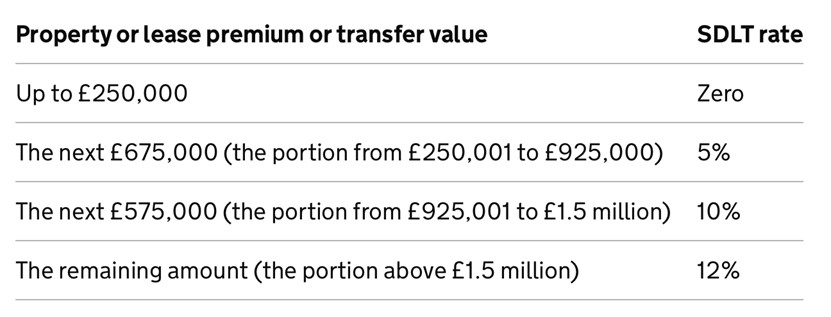Recently, the Labour Party delivered its Autumn Budget on schedule, and the changes to the property market were notable. The aim of the changes is to support home ownership by local residents while discouraging investment by non-UK residents. The rules for calculating stamp duty may seem complicated, but they follow a certain logic. Stamp duty is charged differently depending on the status of the buyer.
1.First time buyers
First time buyers are currently entitled to the following stamp duty exemptions:
- If the price of the property is below £425,000, it is completely exempt from stamp duty;
- If the property is priced between £425,000 and £625,000, stamp duty is only charged on the excess of £425,000 at a rate of 5%;
- If the price of the property exceeds £625,000, then the concession is no longer available and stamp duty is payable at the standard rate.

For example, if you buy a £500,000 house, £425,000 is exempt and the remaining £75,000 is subject to stamp duty at 5%, i.e. £3,750.
2. Single property buyers (not first time buyers)
For non-first time buyers, stamp duty is charged at a different rate. The specific policy is as follows:
- If the price of the property is less than £250,000, it is exempt from stamp duty;
- If the price of the property is between £250,000 and £925,000, stamp duty is charged at 5% on the excess over £250,000;
- 10% stamp duty on the excess over £925,000 if the property is priced between £925,000 and £1.5 million;
- 12 per cent on the excess if the property price exceeds £1.5 million.

The calculation is complicated by the fact that there is a jump in tax rates. For example, on a £1 million house, £250,000 is exempt from stamp duty, while the remaining £750,000 is calculated in stages. Specifically, £33,750 on £675,000 at 5% and £7,500 on the remaining £75,000 at 10%, for a total of £41,250 in stamp duty.
3.Second home buyers
In the Autumn Budget, second home buyers became a targeted group. Under the new policy, from 31 October 2024 to 1 March 2025, second home buyers will be subject to a higher rate of stamp duty when purchasing a property.

Specifically, the rate jump is the same as for single purchasers, but at an increased rate. Again, for a £1 million house, the total amount of stamp duty payable under the new policy is £91,250, almost double the amount payable by a buyer of a single family home.
The introduction of the new policy will undoubtedly have a profound impact on home buyers. For first home buyers, although the stamp duty relief has been limited, it is still generally favourable. However, for second home buyers, the new policy means higher costs. Therefore, investors should still consider factors such as rental income, property price inflation and stamp duty cost when choosing a property.